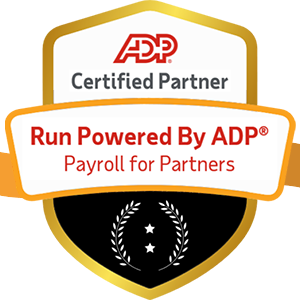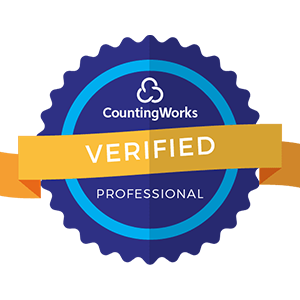In today's ever-changing business landscape, having a skilled workforce isn't enough. You need a resilient workforce – one that can adapt, learn, and thrive in the face of constant change. Enter the world of strategic training and development programs: your secret weapon for creating a team that's not just good at what they do now, but ready to tackle whatever the future throws their way.
Why Resilience is the New Superpower in the Workplace

Before we dive into the how-to's, let's talk about why resilience matters so much in today's work environment:
- Change is the only constant: From technological disruptions to global pandemics, change is happening faster than ever. A resilient workforce can roll with the punches and come out stronger.
- Skill obsolescence is real: What's cutting-edge today might be outdated tomorrow. Resilient employees are always ready to learn and adapt.
- Mental health matters: Resilience isn't just about skills – it's about maintaining well-being in the face of stress and uncertainty.
- Innovation thrives on resilience: When employees feel equipped to handle challenges, they're more likely to take risks and innovate.
The bottom line: Building resilience isn't just good for your employees – it's essential for your business's survival and growth.
The Resilience Equation: Skills + Mindset + Support
Before we get into the nitty-gritty of training programs, let's break down what actually makes a workforce resilient. Think of it as an equation:
Resilience = Skills + Mindset + Support
- Skills: The technical and soft skills needed to perform effectively in current and future roles.
- Mindset: The ability to approach challenges with a growth-oriented, adaptable attitude.
- Support: The organizational structures and culture that enable continuous learning and development.
Your training and development programs need to address all three components to truly build resilience.
The 7 Pillars of Resilience-Building Training Programs
Ready to create training programs that transform your workforce? Here are the key elements you need to include:
1. Future-Focused Skill Development
Don't just train for today – prepare your team for tomorrow.
Key strategies:
- Conduct regular skills gap analyses to identify emerging needs
- Offer training in high-demand skills like data analysis, digital literacy, and emotional intelligence
- Encourage cross-functional learning to build versatility
Pro tip: Use the "70-20-10" model for learning:
- 70% on-the-job experiences
- 20% social learning and mentorship
- 10% formal training
2. Adaptive Mindset Training
Resilience starts in the mind. Help your employees develop a growth mindset and emotional agility.
Key strategies:
- Offer workshops on growth mindset principles
- Provide training in stress management and emotional regulation
- Teach problem-solving frameworks that encourage adaptability
Try this: Implement a "Challenge of the Week" program where teams tackle unfamiliar problems together, fostering adaptability and collaborative problem-solving.
3. Continuous Learning Culture
Make learning a part of your company's DNA, not just a one-off event.
Key strategies:
- Create a digital learning platform with on-demand courses
- Implement "learning hours" where employees can dedicate time to skill development
- Recognize and reward continuous learners
Idea spark: Start a "Teach-to-Learn" initiative where employees share their expertise through short presentations or workshops, reinforcing their own knowledge while spreading skills across the organization.
4. Personalized Learning Paths
One-size-fits-all training is out. Tailored learning experiences are in.
Key strategies:
- Use AI-powered learning platforms to recommend relevant content
- Offer career pathing tools that align training with individual goals
- Implement mentorship programs for personalized guidance
Food for thought: Consider creating "learning personas" based on different career stages and aspirations within your organization. Use these to curate targeted learning experiences.
5. Experiential Learning Opportunities
Theory is good, but practice makes perfect (and builds confidence).
Key strategies:
- Use simulations and role-playing exercises to practice new skills
- Implement job rotation programs for hands-on experience in different roles
- Encourage "stretch assignments" that push employees out of their comfort zones
Try this: Create a "Failure Lab" where employees can share stories of professional missteps and what they learned, fostering a culture that sees failure as a stepping stone to growth.
6. Well-being Integration
Resilience isn't just about skills – it's about maintaining mental and emotional health.
Key strategies:
- Offer mindfulness and meditation training
- Provide resources for work-life balance and stress management
- Train managers to recognize and support employee well-being
Idea spark: Launch a "Resilience Buddy" system where employees pair up to check in on each other's well-being and share coping strategies.
7. Measurable Outcomes and Feedback Loops
What gets measured gets managed. Track the impact of your resilience-building efforts.
Key strategies:
- Set clear KPIs for your training programs (e.g., skill acquisition rates, employee satisfaction scores)
- Use pre- and post-training assessments to measure progress
- Gather regular feedback from employees and managers on the effectiveness of programs
Pro tip: Create a "Resilience Index" for your organization, combining metrics on skill development, employee well-being, and adaptability to change. Use this to track your overall progress in building a resilient workforce.
Designing Your Resilience-Building Training Program: A Step-by-Step Guide

Now that we've covered the essential elements, let's walk through the process of creating a comprehensive training program that builds resilience:
Step 1: Assess Your Current State
Before you can build resilience, you need to know where you stand.
Action items:
- Conduct a company-wide skills assessment
- Survey employees on their perceived resilience and learning needs
- Analyze performance data to identify areas where lack of resilience impacts business outcomes
Step 2: Define Your Resilience Goals
What does a resilient workforce look like for your specific organization?
Action items:
- Identify key resilience indicators relevant to your industry and business goals
- Set specific, measurable targets for skill development, adaptability, and well-being
- Align your resilience goals with overall business objectives
Step 3: Map Out Your Learning Pathways
Create a blueprint for how employees can develop resilience throughout their career journey.
Action items:
- Define core resilience competencies for different job levels and functions
- Create learning tracks that combine technical skills, soft skills, and mindset training
- Identify opportunities for experiential learning within each pathway
Step 4: Choose Your Training Methods and Tools
Select the right mix of training approaches to engage your workforce.
Action items:
- Evaluate and select a learning management system (LMS) that supports personalized learning
- Decide on a blend of in-person, virtual, and self-paced learning options
- Identify external training partners or resources to supplement internal capabilities
Step 5: Develop Your Content
Create or curate training materials that address your resilience goals.
Action items:
- Develop in-house training modules on company-specific resilience needs
- Curate external content (e.g., online courses, webinars) that aligns with your learning pathways
- Create resources for managers to support resilience-building in their teams
Step 6: Pilot and Launch
Test your program before rolling it out company-wide.
Action items:
- Select a diverse group of employees to participate in a pilot program
- Gather feedback and make necessary adjustments
- Develop a communication plan to generate excitement for the full launch
Step 7: Monitor, Measure, and Refine
Continuously improve your program based on data and feedback.
Action items:
- Implement regular check-ins to track employee progress and satisfaction
- Analyze program metrics to identify areas of success and improvement
- Stay informed about emerging resilience needs and adjust your program accordingly
Overcoming Common Challenges in Resilience Training

Building a resilient workforce isn't without its hurdles. Here's how to tackle some common challenges:
Challenge 1: Lack of Employee Engagement
The problem: Employees see training as a chore rather than an opportunity.
The solution:
- Gamify your learning experiences with badges, leaderboards, and rewards
- Share success stories of how resilience training has positively impacted careers
- Allow employees to contribute to the design of training programs
Challenge 2: Time Constraints
The problem: Employees struggle to find time for learning amidst busy schedules.
The solution:
- Implement microlearning modules that can be completed in 5-10 minutes
- Integrate learning into the flow of work (e.g., quick tips delivered via Slack)
- Offer flexible learning options that employees can access on their own time
Challenge 3: Measuring ROI
The problem: It's challenging to quantify the impact of resilience training.
The solution:
- Define clear, measurable objectives tied to business outcomes
- Use a mix of quantitative (e.g., productivity metrics) and qualitative (e.g., employee stories) data
- Conduct longitudinal studies to track the long-term impact of resilience training
Challenge 4: Resistance to Change
The problem: Some employees or managers may be skeptical of new training initiatives.
The solution:
- Involve skeptics in the planning process to address their concerns
- Provide clear communication on the benefits of resilience training for individuals and the organization
- Start with influential early adopters who can champion the program
Challenge 5: Maintaining Momentum
The problem: Initial enthusiasm wanes over time.
The solution:
- Create a content calendar to regularly refresh and update training materials
- Implement a "resilience challenge" program with monthly themes and activities
- Recognize and celebrate resilience wins to keep motivation high
The Future of Resilience Training: Trends to Watch
As you build your resilience training program, keep an eye on these emerging trends:
1. Virtual Reality (VR) and Augmented Reality (AR) Training
Immersive technologies are making it possible to practice resilience in simulated high-stress scenarios.
Potential applications:
- VR simulations of difficult customer interactions for customer service training
- AR-guided troubleshooting for technical skills development
2. AI-Powered Personalized Learning
Artificial intelligence is taking personalized learning to the next level.
Potential applications:
- AI coaches that provide real-time feedback on communication skills
- Predictive analytics that suggest learning opportunities based on career goals and skill gaps
3. Neuroscience-Based Resilience Training
Understanding how the brain works is informing new approaches to building resilience.
Potential applications:
- Brain-training exercises to improve focus and emotional regulation
- Neurofeedback tools to help employees manage stress more effectively
4. Social Learning Platforms
Leveraging the power of community to build collective resilience.
Potential applications:
- Peer-to-peer learning networks where employees can share knowledge and experiences
- Collaborative problem-solving challenges that build team resilience
5. Wellness Tech Integration
Recognizing the connection between physical health and resilience.
Potential applications:
- Integration of fitness trackers and meditation apps into resilience programs
- Virtual wellness challenges that build both physical and mental resilience
Your Resilience-Building Action Plan: Next Steps
Ready to transform your workforce into a resilience powerhouse? Here's your action plan:
- Conduct a resilience audit: Assess your current workforce's resilience levels and identify key areas for improvement.
- Set your north star: Define what a "resilient workforce" looks like for your organization and set clear goals.
- Get buy-in: Present your vision for resilience training to leadership and key stakeholders.
- Build your dream team: Assemble a cross-functional team to design and implement your resilience program.
- Start small, think big: Launch a pilot program with a select group of employees, but plan for company-wide scaling.
- Embrace technology: Invest in learning technologies that can support personalized, engaging resilience training.
- Make it stick: Integrate resilience-building activities into daily work life, not just formal training sessions.
- Measure and celebrate: Track your progress, share success stories, and recognize resilience champions.
Remember, building a resilient workforce is a journey, not a destination. It requires ongoing commitment, creativity, and a willingness to adapt your approach as your organization evolves. But the payoff – a workforce that's ready to face any challenge with confidence and skill – is well worth the effort.
The bottom line: In a world where change is the only constant, resilience isn't just a nice-to-have skill – it's the foundation of a thriving, future-proof organization. By investing in comprehensive resilience training, you're not just preparing your employees for success; you're securing your company's place in the future of work. So, are you ready to build a workforce that bends but never breaks?






